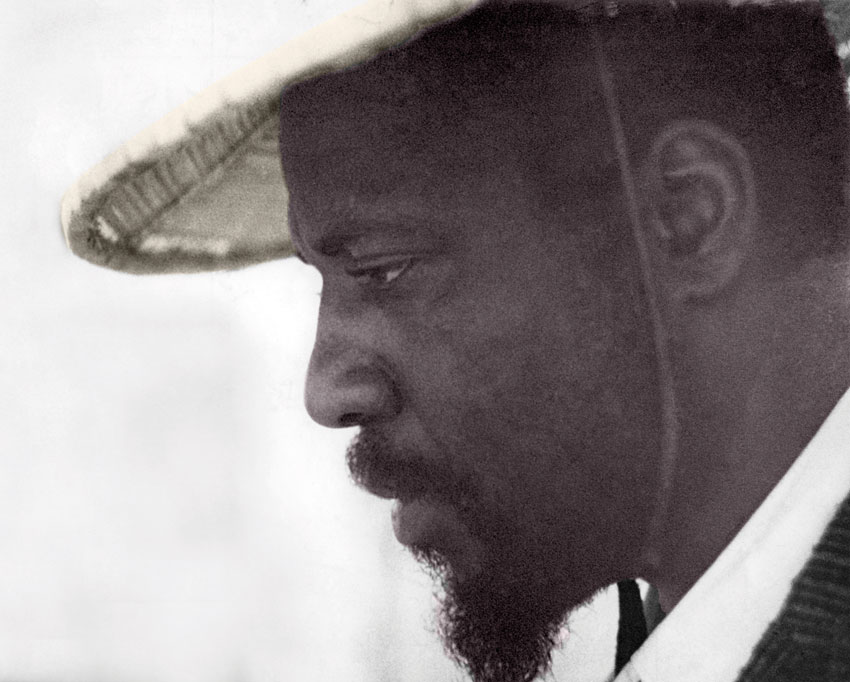

Thelonious monk music series#
Jazz pianist Marcus Roberts is among the artists who have recorded videos for Mighty SONG Writers, a series that aims… Marcus Roberts is among the artists who have recorded videos to promote Mighty Writers, a non-profit organization that teaches reading and writing to low-income and marginalized students.Ģ:38 PM Pianist Marcus Roberts Lends Voice To Literacy Project The Jazz Journalists Association announced its 2021 winners for its JJA Jazz Awards with drummer Terri Lyne Carrington…

Terri Lyne Carrington, Artist of the YearĢ:20 PM Jazz Journalists Name Terri Lyne Carrington Artist of Year Ron Carter, Lifetime Achievement Jazz at Lincoln Center has announced the lineup for its 2021–’22 season of live, in-person performances.

These tracks, amongst a large number of others, are said to have redefined Jazz trajectories not just in Monk’s time, but also today to a noticeable extent.Saxophonist Camille Thurman, above, and the Darrell Green Quartet will reimagine the music of Burt Bacharach in June.ģ:14 PM Jazz at Lincoln Center Announces 2021–’22 Lineup Thelonious Monk’s career resulted in some of the most thought-of tracks in modern Jazz music, such as ‘Round Midnight’, ‘Straight, No Chaser’ and ‘Blue Monk’. The only other album having any significance before Monk retired was Underground, released in 1968. Some of his other productions during this time included studio albums such as Criss Cross (1963), whereas some of the live collections included Miles and Monk at Newport (1963) and Live at the It Club(1964). Monk’s Dream was another album released in 1963, with tracks such as ‘ Bye-Ya’ and ‘ Bright Mississippi’ amongst the most popular. He would continue working on a number of similar albums throughout the 1960s, aided by bassists John Ore and Larry Gales, while also shifting drummers between Frankie Dunlop and Ben Riley. In 1963, he performed with another orchestra, resulting in compositions such as Big Band and Quartet in Concert, taking Monk’s reputation another level higher. After his miraculous comeback to the Jazz stage, he travelled to different parts of the world, focusing more on performing in Europe. Some of the most respected works that brought him international fame were Thelonious in Action and Misterioso (1958) and The Thelonious Monk Orchestra at Town Hall (1959). For the next three years, Monk would have on and off residencies at the Five Spot café, and worked there on spectacular albums with an orchestra. However, due to Monk’s limited exposure to playing arenas, unpopular playing style and techniques, his music failed to be noticed by a wider audience in this period and sold poorly in the market.įortunes took a swift turn for Monk when he began working for Riverside Records after 1955. In the early 1950s, Monk contributed to a self-titled album, together with another piece, Thelonious Monk and Sonny Rollins. However, it was only when he signed contracts with Blue Note Records that his first recording, Genius of Modern Music: Volume 1entered the early Bebop Jazz scene. Although his incredible sense of composition was noticed by a few fellow musicians, other unfortunate events such as the suspension of his New York Cabaret Card, resulted in his expulsion from performing in most New York clubs and bars. It was here that he came in to close contact with renowned musicians like Dizzy Gillespie and Charlie Christian, and really got a grip of how he wanted to progress through his career. Having learned the piano at a very early age, Monk began his musical journey playing soothing Jazz tunes in local clubs like Minton’s Playhouse, where he would improvise and experiment for long hours just to develop some sense of direction.


 0 kommentar(er)
0 kommentar(er)
